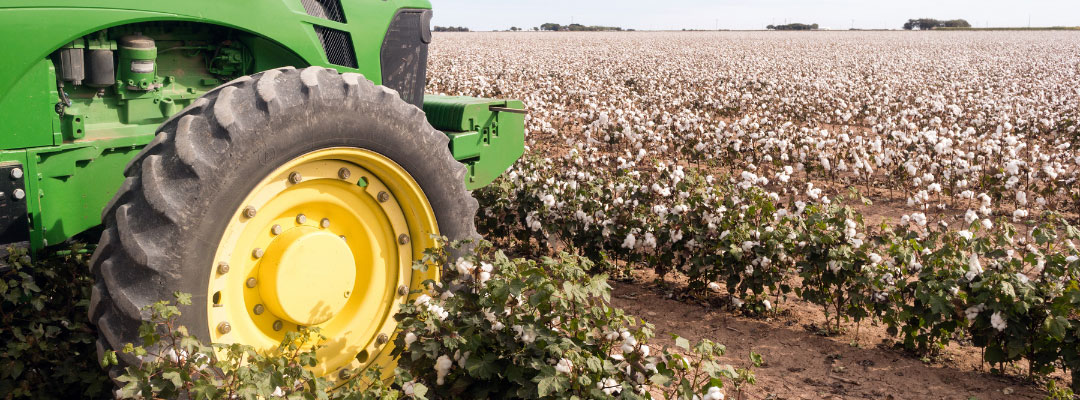From 2019 to 2023, 4.6 million corn acres and 1.4 million cotton acres in the 13-state southeast region were prevented from planting (Table 1; USDA-FSA).
Table 1. Corn and Cotton Prevented Planted Acres for 13 Southern States, 2019-2023

Prevented planting is a provision covered by the United States (US) Federal Crop Insurance Program that compensates producers for losses from delayed planting or not being able to plant an eligible crop within that crop’s region-specific planting period. Under the prevented planting provision, revenue protection (RP), revenue protection with harvest price exclusion (RP-HPE), and yield protection (YP) crop insurance pay producers an indemnity if they are impeded from planting an insured crop by a designated final planting date, or within any applicable late planting period.[1] If a producer – who purchased a qualifying policy – is unable to plant by the final planting date, there are four options:
1. Plant the insured crop in the late planting period with reduced insurance. For most crops, the production guarantee[2] decreases one percent per day, for each day of delay after the final plant date until the crop is planted or the end of the late planting period. Late planting periods vary by crop and area.
2. Take the prevented planting payment, based on the applicable prevented planting factor, and leave ground fallow or plant a summer cover crop after the late planting period. Summer cover crops cannot be harvested or grazed before November 1.
3. Receive 35% of the prevented planting payment for the original crop and switch to an uninsured second crop.
4. Forgo the prevented planting payment for the first crop and plant an insured second crop.
Figure 2. Corn Prevented Planting Decision Tool Results

Projected results are dependent on user specified variables and are displayed for educational purposes only. Actual results may vary based on market conditions and individual circumstances.
The tool depicted in Figure 2 charts the average net returns across all four prevented planting options, aiding producers in their prevented planting decisions. Projected net returns are operation specific and will change by commodity market prices, planting costs, average production history (APH), coverage level, and insurance premium costs. Changing each variable to fit an operation allows producers to quantify the impacts of each prevented plant decision.
The example in Figure 2 depicts a corn-soybean prevented plant scenario where taking 35% of the full prevented planting payment and planting uninsured soybeans provides the highest projected net returns from June 4th to July 2nd (yellow line in figure 2). After July 2nd, taking the full prevented planting payment provides higher net returns due to the yield losses from later season beans (blue line in Figure 2). It is worth noting that planting an uninsured second crop and taking 35% of the full prevented planting payment is a riskier decision than taking the full prevented planting payment. Regardless of date, planting insured beans or late planted corn are projected lower net return decisions in this scenario. Net returns by day of year are based on Tennessee data and may vary between states.
Prevented planting decisions can have large financial impacts on crop producer profitability. In our scenario, late planted corn could even result in a net loss. The prevented plant decision can be quantified by utilizing a prevented planting decision tool to maximize net returns at the farm level.
[1]The final planting date is the last day to plant an insured crop and be eligible for full coverage. The late planting period begins the day after the final planting date and ends 25 days after the final planting date. Final and late planting periods vary by crop and region.
[2] The production guarantee is the guaranteed revenue or yield offered by the crop insurance policy. For an RP policy, the guarantee is calculated by multiplying the insurance price by actual production history (APH) yield, which is a 4-to-10-year trend adjusted average yield used for future crop insurance purchases, by insurance coverage level.
References
University of Tennessee Prevented Planting Decision Aid. Available at https://arec.tennessee.edu/prevented-planting-decision-aids/
University of Tennessee Field Crop Budgets. 2024. Accessed at: https://arec.tennessee.edu/extension/budgets/
USDA Farm Service Agency Crop Acreage Data. 2019-2023. Accessed at https://www.fsa.usda.gov/news-room/efoia/electronic-reading-room/frequently-requested-information/crop-acreage-data/index
USDA Risk Management Agency. Prevented Planting Insurance Provisions Flood. Accessed at: https://www.rma.usda.gov/en/Fact-Sheets/National-Fact-Sheets/Prevented-Planting-Insurance-Provisions-Flood
USDA Risk Management Agency. Prevented Planting Insurance Provisions Drought. Accessed at: https://www.rma.usda.gov/en/Fact-Sheets/National-Fact-Sheets/Prevented-Planting-Insurance-Provisions-Drought
USDA Risk Management Agency. Prevented Planting. Accessed at: https://www.rma.usda.gov/en/Topics/Prevented-Planting
Duncan, Hence, Chris Boyer, and Aaron Smith. “Corn and Cotton Prevented Planting Decisions.” Southern Ag Today 4(15.1). April 8, 2024. Permalink



